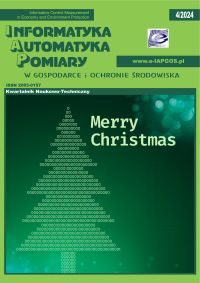Z-NUMBERS BASED MODELING OF GROUP DECISION MAKING FOR SUPPLIER SELECTION IN MANUFACTURING SYSTEMS
Kamala Aliyeva
kamalann64@gmail.comAzerbaijan State Oil and Industry University (Azerbaijan)
https://orcid.org/0000-0001-5498-5982
Abstract
The health of the supply chain, the company's performance, and the quality of the production as well as the success of the entire enterprise, directly depends on the reliability of the company's existing suppliers. Processing enterprises that depend on suppliers are trying to find the best option that will satisfy all customer requirements. With high-quality and inexpensive raw materials, the products produced by the enterprise will largely determine its economic indicators such as revenue, profit, and profitability. Therefore, this enterprise is especially faced with the issue of choosing the most appropriate supplier of resources. Basically, for processing enterprises it is very important to consider the parameters such as quality of incoming materials, terms of supply of raw materials, price of received raw materials, terms of contracts. The challenge in determining of supplier is how to choose reliable suppliers that can maintain supply chain continuity in an environment of ever-increasing instability and uncertainty. For this purpose, a methodology for selecting suppliers using Z-numbers was proposed. Using fuzzy Z numbers in supplier selection, decision-makers can assign values to various criteria in a way that reflects both the uncertainty and the confidence associated with those values. This can lead to more nuanced and robust supplier selection processes, considering a wider range of factors and uncertainties.
Keywords:
supplier selection, multi-criteria decision making, fuzzy group decision making, fuzzy numbers, Z-numbersReferences
[1] Aliev R., Huseynov O., Aliyeva K.: Aggregation of an expert group opinion under Z-information. Proceedings of the Eighth International Conference on Soft Computing, Computing with Words and Perceptions in System Analysis, Decision and Control, 2015, 115–124.
Google Scholar
[2] Chan F., Kumar N.: Global Supplier Development Considering Risk Factors Using Fuzzy Extended AHP-Based Approach. Omega International Journal of Management Science 35, 2007, 417–431 [https://dx.doi.org/10.1016/j.omega.2005.08.004].
DOI: https://doi.org/10.1016/j.omega.2005.08.004
Google Scholar
[3] Chang B., Chang C., Wu C.: Fuzzy DEMATEL Method for Developing Supplier Evaluation Criteria, Expert Systems with Applications 38(3), 2011, 1850–1858 [https://dx.doi.org/10.2202/1558-3708.1832].
DOI: https://doi.org/10.1016/j.eswa.2010.07.114
Google Scholar
[4] Chen C. T.: Extensions of the TOPSIS for group decision-making under fuzzy environment. Fuzzy Sets and Systems 114(1), 2000, 1–9 [https://doi.org/10.1016/S0165-0114(97)00377-1].
DOI: https://doi.org/10.1016/S0165-0114(97)00377-1
Google Scholar
[5] Chen Y., Wang T.: Optimizing partners’ choice in IS/IT outsourcing projects: The strategic decision of fuzzy VIKOR, International Journal of Production Economics 120, 2009, 233–242 [https://doi.org/10.1016/j.ijpe.2008.07.022].
DOI: https://doi.org/10.1016/j.ijpe.2008.07.022
Google Scholar
[6] Chen S. H.: Ranking fuzzy numbers with maximizing set and minimizing set. Fuzzy sets and Systems 17(2), 1985, 113–129.
DOI: https://doi.org/10.1016/0165-0114(85)90050-8
Google Scholar
[7] Chu T., Varma R.: Evaluating suppliers via multiple levels multiple criteria decision-making method under fuzzy environment. Computers & Industrial Engineering 62(2), 2012, 653–660 [https://dx.doi.org/10.1016/j.cie.2011.11.036].
DOI: https://doi.org/10.1016/j.cie.2011.11.036
Google Scholar
[8] Kahraman C., Kaya I.: Fuzzy Process Capability Analysis and Applications, Production Engineering and Management under Fuzziness 252, 2010, 483–513.
DOI: https://doi.org/10.1007/978-3-642-12052-7_20
Google Scholar
[9] Kar A. K.: A hybrid group decision support system for supplier selection using analytic hierarchy process, fuzzy set theory and neural network. Journal of Computational Science 6, 2015, 23–33.
DOI: https://doi.org/10.1016/j.jocs.2014.11.002
Google Scholar
[10] Karsak E., Dursun M.: An integrated fuzzy MCDM approach for supplier evaluation and selection. Computers and Industrial Engineering 82, 2015, 82–93 [https://doi.org/10.1016/j.cie.2015.01.019].
DOI: https://doi.org/10.1016/j.cie.2015.01.019
Google Scholar
[11] Kavita S., Kumar S.: A multi-criteria interval-valued intuitionistic fuzzy group decision making for supplier selection with TOPSIS method. Lecture Notes Artificial Intellegence 5908, 2009, 303–312 [https://doi.org/10.1007/978-3-642-10646-0_37].
DOI: https://doi.org/10.1007/978-3-642-10646-0_37
Google Scholar
[12] Khurrum S., Faizul H.: Supplier selection problem: a comparison of the total cost of ownership and analytic hierarchy process approaches. Supply Chain Management: An International Journal 7(3), 2002, 126–135 [https://doi.org/10.1108/13598540210436586].
DOI: https://doi.org/10.1108/13598540210436586
Google Scholar
[13] Kontis A., Vrysagotis V.: Supplier selection problem: a literature review of multi-criteria approaches based on DEA. Advances in Management & Applied Economics 1(2), 2011, 207–219.
Google Scholar
[14] Singh Sh., Singh R., Seth N.: Ranking of critical success factors for online retailing by TOPSIS approach. International Journal of Productivity and Quality Management 21(3), 2017, 359–374 [https://doi.org/10.1504/IJPQM.2017.10005237].
DOI: https://doi.org/10.1504/IJPQM.2017.084460
Google Scholar
[15] Soroor J., Tarokh M., Khoshalhan F., et al.: Intelligent evaluation of supplier bids using a hybrid technique in dis-tributed supply chains. Journal of Manufacturing Systems 31(2), 2012, 240–252.
DOI: https://doi.org/10.1016/j.jmsy.2011.09.002
Google Scholar
[16] Vinodh S., Ramiya S., Gautham R.: Application of fuzzy analytic network process for supplier selection in a manufacturing organization. Expert systems with applications 38, 2011, 272–280 [https://doi.org/10.1016/j.eswa.2010.06.057].
DOI: https://doi.org/10.1016/j.eswa.2010.06.057
Google Scholar
[17] Wang H.: Theories for competitive advantage. Hasan H. (eds.): Being Practical with Theory: A Window into Business, Research. THEORI, Wollongong, Australia 2014, 33–43.
Google Scholar
[18] Wang S.: Applying 2-tuple multigranularity linguistic variables to determine the supply performance in dynamic environment based on product-oriented strategy 2-tuple. IEEE Transactions on Fuzzy Systems 16(1), 2008, 29–39 [https://dx.doi.org/10.1109/TFUZZ.2007.903316].
DOI: https://doi.org/10.1109/TFUZZ.2007.903316
Google Scholar
[19] Zadeh L.: Fuzzy Sets, Information and Control 8(3), 1965, 338–353 [https://doi.org/10.1016/S0019-9958(65)90241-X].
DOI: https://doi.org/10.1016/S0019-9958(65)90241-X
Google Scholar
[20] Zadeh L.: A Note on Z-numbers. Information Sciences 181(14), 2011, 2923–2932 [https://doi.org/10.1016/j.ins.2011.02.022].
DOI: https://doi.org/10.1016/j.ins.2011.02.022
Google Scholar
Authors
Kamala Aliyevakamalann64@gmail.com
Azerbaijan State Oil and Industry University Azerbaijan
https://orcid.org/0000-0001-5498-5982
Statistics
Abstract views: 104PDF downloads: 56









